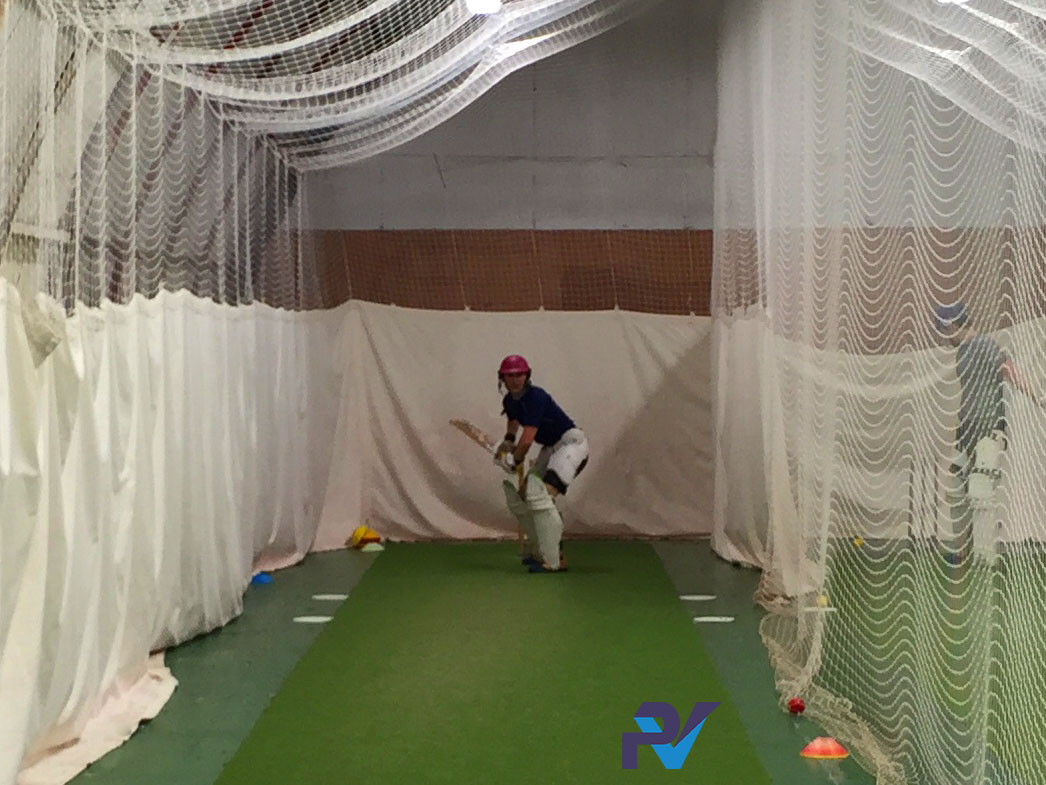|
 Last night at net practice, one of my team was sent in to bat. In one hand was his bat, and in the other hand was a bunch of cones. I had to ask what he was up to. Last night at net practice, one of my team was sent in to bat. In one hand was his bat, and in the other hand was a bunch of cones. I had to ask what he was up to.
"I had some trouble against spin in the last game", he admitted, "I want to work on it today. Can we just have spinners bowling and I'll mark out my scoring areas with these cones?"
As you know, the idea of mindful - or intention - netting is huge for us at PitchVision. So, I was delighted to hear a player do this in his own way. He wasn't thinking about technique, or body position or "back swing and step": He was thinking about he could hit the ball into a gap.
Even better, he was experimenting with different methods. He wasn't concerned if he got out, he was working on seeing how far he could push it to get the ball into that gap (or over the top). He was learning about his game, bith what he could do, and what he needs to leave behind.
That got me to thinking; what are some intentions you can take into nets to make your plans for the middle?
I'm sure you are already thinking of a few, but here is a list of practices I have tried with players that resonates with their aims when they are facing bowlers in the nets.
1. Open the batting
Your intention is to bat like you are opening the innings; play like you would in the first three or so overs of a game.
- Take a few balls to judge the ball's pace and movement
- Leave balls outside off stump
- Play straighter balls into the less defended on side
- Drive full balls, cut and pull short ones
Within these rules, experiment with how far you can push it: How tight a ball to off stump can you leave? How close to a good length can you drive when the ball is swinging? How wide on the off side can you hit a ball through mid on or midwicket for a single?
You will make mistakes and you might even end up getting out a few times. I'm sure the bowlers will get after you for that, but nets are the time to experiment!
2. Find the gaps
Like my player above, your aim here is to put the ball where the fielders are not. Pace or spin doesn't matter, but you have to score off every ball.
- Play conventionally when the ball allows
- Defend with the aim of dropping the ball for a single
- Hitting over the top when the field is up
- Pairing up shots, like the "sweep and roll".
- Playing more unusual shots to hit the ball into areas where there are no fielders.
Your experimentation here is to see what you can get away with. How hard can you hit a dropped single before it's a run out? How hard do you need to hit over the top the clear the fielder? What shot will frustrate the bowler because it makes him plug a gap that you can exploit? Equally, what just doesn't work for you?
3. One crazy thing
If you don't push you limits, how will you know what you can do?
In this net, you try and face bowlers and only do one thing the whole net. You may fail a lot here, and sometimes you will look plain stupid, but you will quickly learn what works and what doesn't. It's an experiment. You can try anything you like, but here are some popular ones;
- Walk down the wicket
- Sweep and reverse sweep
- Work through the leg side
- Backloading
With the natural variations in bowling, you will get natural variations in the shot you're trying. It's great fun for everyone, if you can get it past the coach telling you off for "messing around"!
4. Long handle
This option is the most abused by players who want to have a slog in the safety of nets. So, before you do this, ask yourself if "death batting" is the type of situation you bat in a lot, and if you really need to work on it. If you do,
And once you are done...
One last thing.
No matter what intention you went in to try, always finish the session by reviewing how it went.
I like to review with some stats: Keep a score of what you did well and what you did badly (for example giving yourself two points for a good leave as an opener). You can track this with PitchVision or hand notation. Over time you will see your ability improve.
While stats work well, it's also important to think abut how it felt too.
Stats don't tell you if playing that shot to that ball felt right. The chances are that if it feels good, it's the way that work for you and you should stick with it, even if you have an unsuccessful net the first time. So even if you simply chat through your feeling about the session with the coach or a trusted team-mate, you are up on the deal.
This last part is vital because it creates the feedback loop you need to improve. With this loop in place, it's just a matter of putting in the hours in nets and watching your skills shoot up.
Discuss this article with other subscribers
|